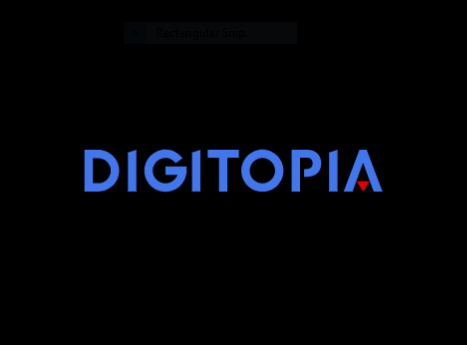How Marketers Can Effectively Use User-Generated Content?
 Imran Ali
Imran Ali
In such a digital world that probably has tremendous regard for authenticity, UGC has emerged as the biggest marketing tool since it allows brands to connect more intimately with their audience to give potential customers the confidence that real people endorse their products or services.
Users are, therefore, not only engaging with brands but also creating content that shapes the way brands are perceived. Front runners are Instagram, Facebook, TikTok, and YouTube.
Marketers can harness user-generated content to create trust, engagement, and more conversions. But, knowing how it should be used optimally is the way of guaranteeing that it fulfills the purpose and message of the brand. So, what are some strategies marketers may use to "harness" a user-generated content strategy?
What Is User-Generated Content?
Before we delve into strategies, let's define user-generated content. UGC is simply any content—pictures, videos, reviews, blog posts, or social media status updates—created by consumers as opposed to the brand itself. In most cases, this content is shared on social networks and reflects one's real, everyday experiences with a product or service.
UGC is strong because it is natural, authentic, and credible. Since it comes from actual consumers, not from a commercial, it can have a more influential effect on the purchasing decision than when the message directly comes from the company.
Benefits of User-Generated Content to Marketers
It Brings Trust and Credibility: Consumers have more trust in other customers rather than in commercials. Other things that people are sharing are what is going to create that community and trust around the brand.
Promotes Engagement: UGC stimulates engagement. In cases where users upload content, they are most likely to engage with a brand, thus increasing engagement rates and making the brand more visible on social sites.
Cost-Saving: Developing high-quality content can be very time-consuming and expensive as well. In contrast, UGC is user-generated content; therefore, companies can save costs associated with content creation while enjoying good marketing content.
Boosts SEO: Reviews by users, blog posts, and other forms of UGC can help improve search engine rankings, especially when content is distributed across different social avenues. This increases the brand's online presence.
Creates Unique Relationships: With user-generated content, brands can reach out to their customers on a much more personal level, thereby increasing brand loyalty as well as meeting community-building efforts.
How to Leverage User-Generated Content Wisely?
With all this in mind, let's focus on how marketers can apply it strategically to deliver effective results.
1. Encourage Customers to Share Their Experience
One of the simplest ways to collect UGC is by asking customers to share their experiences. Brands can request users to publish their posts on social media using specific hashtags related to the brand or campaign-this will provide them with useful content, while also allowing them to monitor and collate posts with the hashtag about the brand.
For instance, a brand can conduct a photo or video uploading contest from the users, such that the reward could be either the most creative post or a feature on the brand's social channels. This builds anticipation for the product and encourages others to join in as well.
2. Leverage Social Proof through Marketing Messages
Social proof is that psychological phenomenon that makes people act based on what other people are doing or saying when they make a choice. Content generated by the user is a form of social proof because it also mirrors actual usage and endorsement by the customer.
Marketers can make use of this by including UGC in the course of their advertisement campaigns.
For example, using testimonies, reviews, or photos of customers in newsletters, social media advertisements, or on the brand website might work wonders. It indicates that others loved their experience with the brand, hence helping to foster trust and drive a higher chance of conversion.
3. Show UGC on Product Pages
A great source of user-generated content has to be the product pages. Including reviews from customers, unboxing videos, or photographs can very well assist in the building of a perception of trust and transparency when a potential buyer sees real people using the product and having fun with it, thus building them up with confidence for the purchase decision.
Adding UGC to product pages improves the conversion rate and, subsequently, the cart abandonment rate as well. All the while, it's on these pages that social validation from other users gets that buying.
4. Reuse the Same UGC Across Different Channels
Accumulate all that user-generated content and ensure that as much of it as possible is reused across channels. A photo posted on Instagram may appear in an e-mail campaign or embedded on a blog. Videos taken by customers may be featured in ads, and reviews might appear on landing pages.
This strategy will enable marketers to get the most from each content piece and create a constant and authentic voice for the brand in all channels.
5. Partners with Influencers and Advocates
Influencers and brand advocates are also very good sources of user-generated content because they already have followers who trust their opinions and recommendations, so these influencers will be very useful partners in UGC campaigns.
Collaborating with influencers does not necessarily mean partnering with the most prominent figures in the industry. The effect is actually with micro-influencers: those whose followings may be slightly smaller and far more niche, but who are extremely engaged.
Brands may ask their chosen influencers to create content cohering around the brand and the products the brand is offering. This content may then be distributed on both the influencer's and the brand's social media channels.
6. Create a Community Around Your Brand
Building a community around a brand is one of the highly effective engagement techniques to encourage user-generated content. The company should always create an environment that makes customers feel valued and heard so that they share experiences with the brand.
Another wonderful tool for building community is social media platforms and branded hashtags.
Here, through the involvement of users, comments responses, and content sharing by brands, a strong community can be developed that shows eagerness to contribute.
Ethical Considerations While Using UGC
It can be a goldmine for the marketer when one opportunity for user-generated content comes, but do not forget: this aspect has to be done ethically. One has to seek permission from users every time he wants to use it for any official occasion. Whether it's a photo review or video, the credit should be given appropriately, and his content should not be altered in his absence.
Secondly, all UGCs used should be aligned with the values and messaging of the brand. Inappropriate or out-of-content usage of content can easily go wrong and negatively affect brand perception.
Why Marketers Should Learn More About UGC from a Digital Marketing Institute
Knowing the dos and don'ts on user-generated content usage is one of the most important aspects of a digital marketing campaign. For those interested in the intricacies of UGC and other digital marketing approaches, attendance at a reputable academy, such as the Digital Marketing Institute in Mohali, Gurgaon, Faridabad, and other locations across India, can result in further training.
Such institutions provide specific courses in every detail of social media marketing, and the utilization of user-engagement participation for brand-growth purposes. It equips marketers with expertise in navigating the current competitive scenarios of the digital world.
FAQs
1. What is user-generated content?
User-generated content, or UGC, is any content that users create, from pictures and videos to reviews and blog postings, etc. Authenticated on social media, such content reflects experiences with a product or service for an individual.
2. How could UGC help a brand?
It encourages trust, increases engagements, enhances SEO, and is cost-effective. It provides a natural way of interacting with customers and leads to community-building activities.
3. How do brands encourage users to generate UGC?
Brands can encourage users through contests, branded hashtags, influencer collaboration, or simply reaching out to their customers through social media
4. Ethics when using UGC without permission
No, a brand should always get permission from a user before using their content. Proper credit and consent are other things that denominate the ethical usage of UGC.
5. How does a Digital marketing institute support UGC?
Such courses help marketers learn the best way in which they can use UGC to their advantage amongst other digital marketing techniques.
Subscribe to my newsletter
Read articles from Imran Ali directly inside your inbox. Subscribe to the newsletter, and don't miss out.
Written by

Imran Ali
Imran Ali
I'm a Digital Marketer and Content Marketing Specialist with a passion for both technical and non-technical writing.